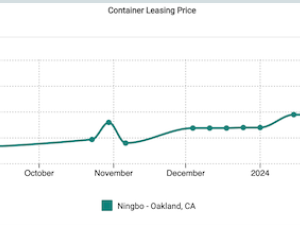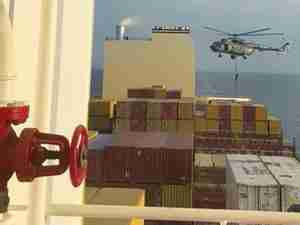Speaking at an industry conference here focused on transpacific trades, Mr. Hsieh added that despite the recovery of consumer demand in the U.S. and Europe, the growth of imports from Asia this year can offset the impact of financial storm and return to the pre-crisis levels.
"Boosted by the expansion of China's domestic market, intra-Asia trade was able to reduce the impact of an economic recession. So, in contrast to the severe decline in most trade lanes, the intra-Asia market was able to maintain a high degree of stability throughout the global financial storm," said Mr. Hsieh. 'This year the Asian market has been boosted by regional free trade development and shows strong growth, he added. Citing statistics, Mr. Hsieh said that in 2009 the intra-Asia cargo volumes decreased by 2.6%. During the first half of this year, the cargo volumes increased by 16.9%. The performances of both periods outstrip the long-haul markets from Asia to the U.S. and Europe. "The change of China's economic policy offers such an opportunity for ASEAN countries," said Hsieh. Until the global financial crisis, the booming market triggered a capacity expansion race among vessel owners and container carriers. Quoting published statistics, he said the fleet of VLCS (Very Large Container Ship) is expected to increase to 335 ships with an estimated 200 more expected to join the market by the end of 2013. "As large-sized newbuildings phase into long-haul services, vessels of middle and smaller sizes will cascade to secondary trade routes. The ripple effect has extended to the intra-Asia market," he said. "Previously vessel sizes utilized in the intra-Asia services were limited to about 3,000 TEU due to the capacity of ports and terminals in Southeast Asia. But excluding the Far-East legs of long-haul services, Panamax vessels are being deployed to six intra-Asia loops. With the investment in expansion of terminals in ASEAN countries, the fleet size of ships will continue to increase." This year the cargo growth and capacity increases in intra-Asia trades were responsible for port congestion in Vietnam, the Philippines and Indonesia. Those situations highlighted the shortage of terminal capacity in these countries. To secure the benefits of free trade agreements, many ASEAN nations are prioritizing the improvement of port facilities and expanded terminal capacity. "Modern ports are more than gateways for marine transport. They are also an important link in the global supply chain. If terminal capacity does not keep up with increased vessel tonnage, it will negatively impact the efficiency of cargo movements, increase storage costs and raise the uncertainty of logistics management," said Mr. Hsieh. The result would be the decline in carrier competitiveness and ultimately, plans for investment. "If a country wants to promote foreign trade, therefore, it is imperative that the efficiency of terminal operations be a priority." He spoke also of improved rail service, including modern development of a transportation link that includes the cross-border economic channel starting in Nanning in China and running through major cities in Vietnam, Laos, Cambodia, Thailand, Malaysia and Singapore by rail and road. The whole network is expected to cover an "astonishing" length of around 5,000 kilometers. In August China and six ASEAN countries reached an agreement on the







